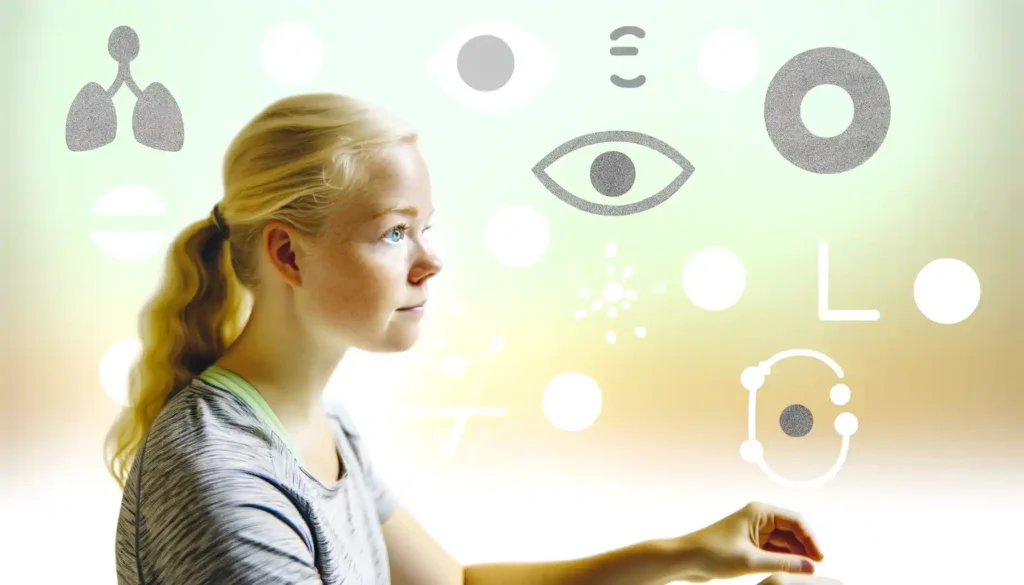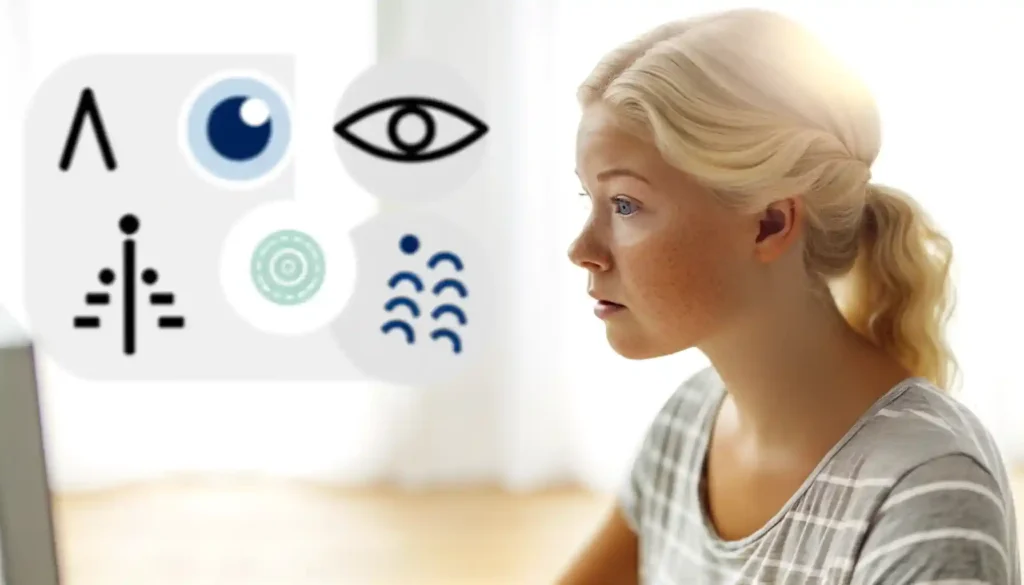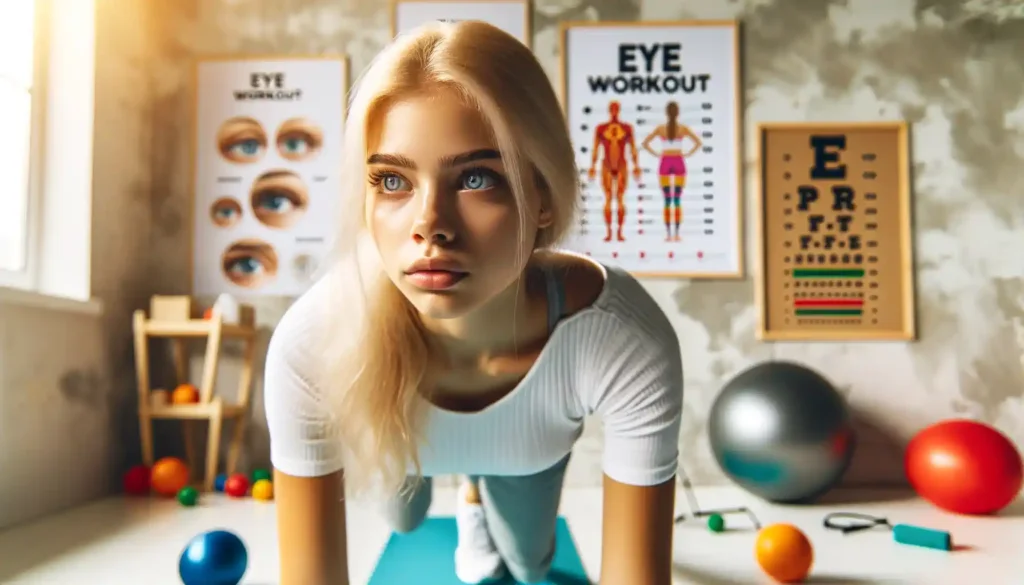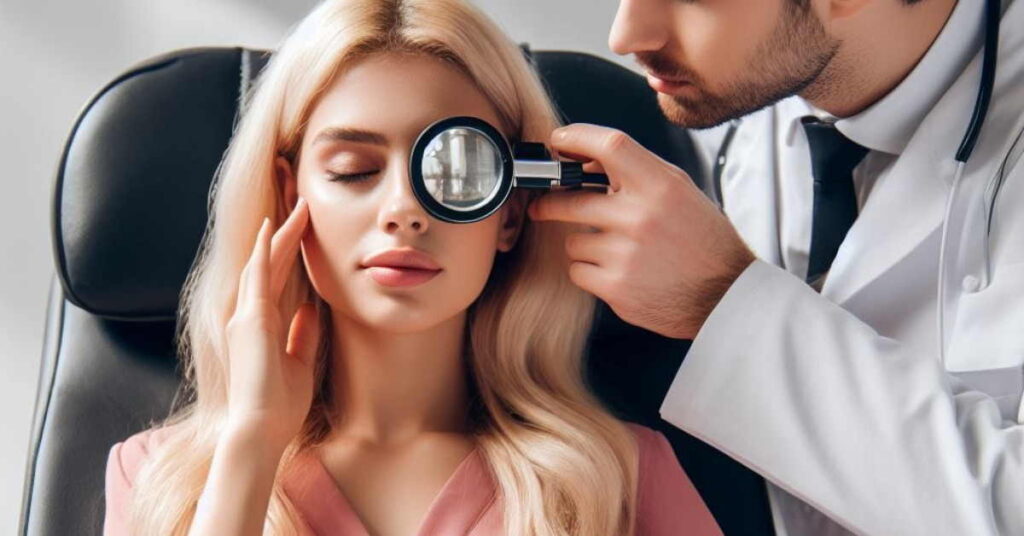Unlocking the Secrets: Can Sight Get Better Naturally? Over time, many of us notice a decline in our vision. Whether due to improper screen use, environmental factors, or genetics, poor eyesight is a common concern. The question that often arises is whether it’s possible to improve vision naturally, without resorting to surgical procedures or corrective lenses. In this article, we will delve into the fascinating world of natural vision improvement, exploring the effectiveness of eye exercises and relaxation techniques in the quest for better sight.

Understanding the Mechanics of Vision
Before we embark on the journey to improve our vision naturally, it’s essential to understand the fundamentals of how our eyes work. The eye is a complex organ that relies on various components, including the cornea, lens, retina, and optic nerve, to process light and transmit visual signals to the brain. When any of these components encounter issues, it can lead to vision problems.
Common Vision Problems
The most common vision problems include myopia (nearsightedness), hyperopia (farsightedness), astigmatism, and presbyopia (age-related difficulty in focusing on close objects). These issues often result from the improper shaping of the cornea or lens, which affects the way light is refracted onto the retina.
Can Sight Get Better Naturally?

The human eye is not a static organ; it can adapt and change over time. With the right eye care, it’s possible to enhance visual acuity naturally. Here are some approaches that may help:
1. Eye Exercises: Holistic Approaches to Better Vision, Mind, Body, and Eyes

One of the cornerstones of natural vision improvement is eye exercises. These exercises are designed to strengthen the eye muscles and improve their flexibility. By doing these exercises regularly, individuals aim to alleviate strain and reduce the progression of vision problems.
- The Bates Method: Developed by Dr. William Bates in the early 20th century, this method involves various eye exercises and relaxation techniques. Advocates claim that it can help improve vision by relieving eye strain and promoting relaxation.
- Palming: Palming is a simple relaxation technique that involves covering closed eyes with warm palms to relax the eye muscles. It’s believed to reduce stress and enhance overall eye comfort.
2. Proper Nutrition
Nutrients like vitamin A, vitamin C, vitamin E, zinc, and omega-3 fatty acids are essential for good vision. Including foods rich in these nutrients, such as carrots, spinach, salmon, and nuts, in your diet can contribute to better eye health.
3. Reduce Eye Strain
Preventing eye strain is essential for maintaining good eyesight. Ensure proper lighting when reading or working on a computer, and maintain an ergonomically sound workspace. Adjusting font size and screen brightness can also help reduce strain.
4. The Role of Stress and Sleep in Vision Health: How to Improve Both
Adequate sleep is crucial for overall health, including eye health. During sleep, the eyes can relax and repair themselves. Lack of sleep can lead to eye fatigue and strain, which may worsen vision problems. The role of stress and sleep in vision health cannot be understated. Prolonged stress and insufficient sleep can take a toll on our eyes and overall eye health.
High-stress levels often lead to eye strain and discomfort, exacerbating conditions like dry eyes and blurred vision. Additionally, inadequate sleep disrupts the eye’s natural repair and maintenance processes, potentially contributing to a range of eye issues. To improve both stress management and sleep quality, consider incorporating relaxation techniques such as meditation or deep breathing exercises into your daily routine. Creating a sleep-conducive environment with a comfortable mattress, proper lighting, and a consistent sleep schedule can also aid in achieving restorative sleep. Prioritizing stress reduction and quality sleep not only benefits your overall well-being but also plays a crucial role in maintaining optimal vision health.
The Science Behind Natural Vision Improvement
While some people report positive results from natural vision improvement techniques, scientific evidence on their effectiveness is mixed. The Bates Method, for example, lacks robust scientific support. However, the 20-20-20 rule, proper nutrition, and reducing eye strain are well-documented strategies for maintaining eye health.
It’s important to approach natural vision improvement with realistic expectations. These methods may not miraculously reverse severe vision problems or eliminate the need for glasses or contacts, but they can help alleviate discomfort and slow the progression of certain conditions.

Vision Care With Eyesight Academy to get vision back to normal
Are you tired of squinting at your screen? Do you dream of seeing the world more clearly without relying on glasses or contacts? Look no further! Eyesight Academy proudly presents the Sight Better course – your pathway to healthier, sharper, and more vibrant eyesight!
Don’t Miss Out! Enroll Today and Get Ready to: 🔥
Individual Results May Vary
It’s crucial to recognize that the effectiveness of natural vision improvement methods varies from person to person. Factors such as the underlying cause of vision problems, individual eye health, and consistency in practicing these methods can influence outcomes.

Restoring Sight to Normal: Illuminating Insights from “Let There Be Light Method”
In an era marked by staggering technological advancements, our understanding of light—a fundamental aspect of our daily lives—remains surprisingly limited, especially when it comes to its crucial role in eye health and vision. The groundbreaking insights from the book “Let There Be Light” shed light on this very aspect, offering a fascinating exploration into how light influences our ability to see clearly and without strain.
The Evolution of Human Vision
Our ancestors spent their days outdoors, from dawn until dusk, in an environment illuminated by the sun’s bright light. This exposure to natural light played a pivotal role in the evolution of human vision, optimizing our eyes for activities that required looking into the distance. However, as civilizations advanced, artificial lighting—from kerosene lanterns to Edison’s revolutionary light bulb—transformed our living conditions, leading to a significant departure from the natural light conditions under which our eyes had evolved.
Modern Challenges to Eye Health
Today’s lifestyles pose unique challenges to our vision. Extended work hours, predominantly indoor activities, and tasks that demand focusing on close objects under poor lighting conditions are stark deviations from the natural principles that once guided our visual activities. These modern habits have not only led to a widespread prevalence of vision problems but have also imposed an unnatural strain on our eyes, which have not adapted to these new demands.
The Science of Sight and Light
Scientific research has revealed the intricate relationship between light, eye strain, and overall energy expenditure. Experiments have demonstrated that insufficient lighting not only increases visual strain but also significantly drains nervous energy. This has profound implications for professions that require sustained visual focus, highlighting the importance of proper lighting in mitigating fatigue and enhancing performance.
Lighting the Way Forward
The book offers practical advice for optimizing lighting conditions in our living and workspaces to safeguard our vision and improve our overall well-being. By adhering to recommended lighting power, ensuring even illumination, and avoiding overly bright focal points, we can create environments that are conducive to eye health and vitality.
Holistic Health and Vision
“Let There Be Light” goes beyond the physical aspects of sight, delving into the holistic integration of body, mind, and spirit as taught in Eastern traditions. It presents the eyes not just as sensory organs but as windows to the soul, emphasizing the interconnectedness of our health and vision. By embracing a balanced approach to nutrition, engaging in energy exercises like qigong, and exploring the healing potential of herbs and foods, the book offers a comprehensive path to not only preserving but enhancing our vision and overall health.
Consulting an Eye Care Professional
Before embarking on a natural vision improvement journey, it’s okay to consult with an eye care professional. They can conduct a comprehensive eye exam to determine the root cause of your vision issues and provide personalized recommendations.
Conclusion of Can Sight Get Better
While the idea of improving vision naturally through eye exercises and relaxation techniques is enticing, it’s essential to approach it with a balanced perspective. Maintaining overall eye health through proper nutrition, reducing eye strain, and following regular breaks can undoubtedly contribute to better vision. Individual results may vary, and these methods may entirely eliminate the need for corrective measures in some cases.
In essence, “Let There Be Light” serves as a beacon, guiding readers toward a deeper understanding of the vital role light plays in our vision and health. By revisiting the natural conditions under which our eyes evolved and embracing holistic practices, we can address the challenges posed by modern life to our vision. This book is not merely a collection of insights and recommendations; it is an invitation to transform our approach to eye health, promising a future where excellent vision and boundless vitality are within our reach.
It is possible to get better sight through natural methods prioritizing and safeguarding our eyes for a brighter and clearer future.
- How to Manage Astigmatism Naturally: A Comprehensive Guide
- How to get rid of under-eye bags Naturally? Top 10 Strategies for a Refreshed Look
- 5 Best Foods to Get Better Eye Health and Vision
- Top 10 Essential Facts You Need to Know About Eye Floaters
- How to UPGRADE EYESIGHT with Specialized eye Training


